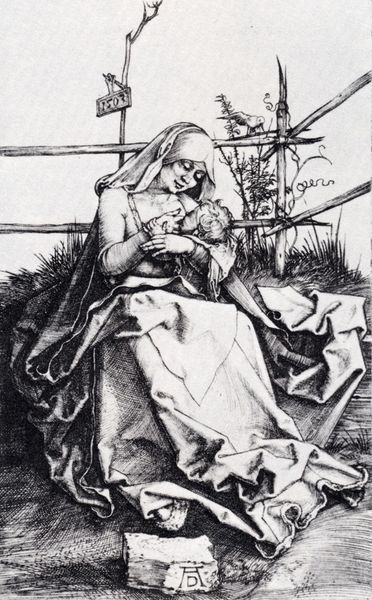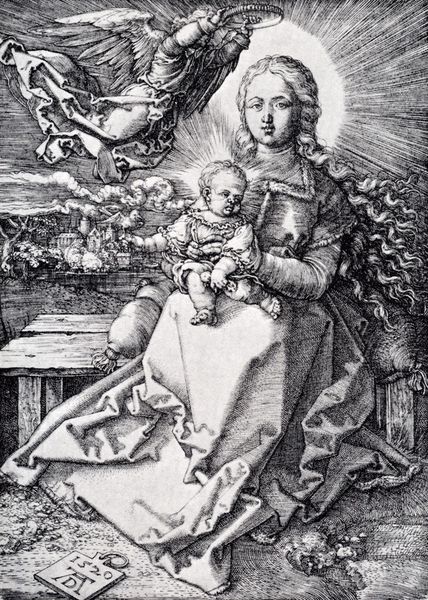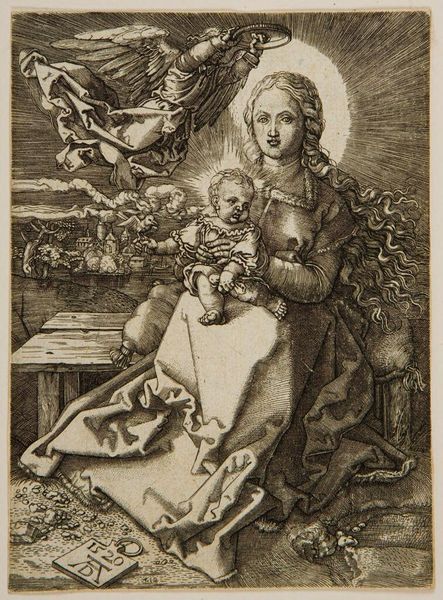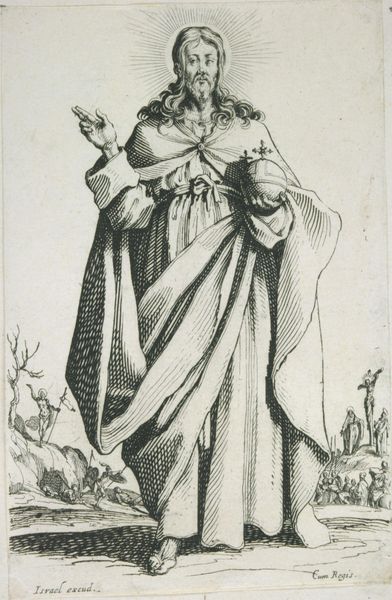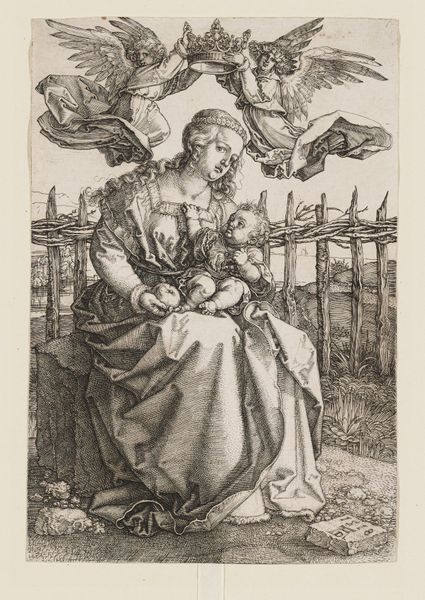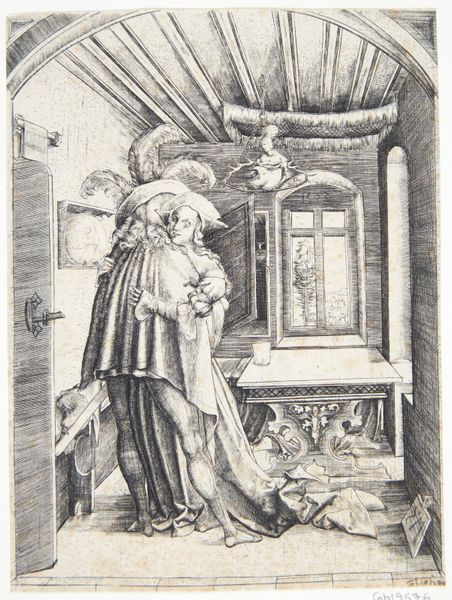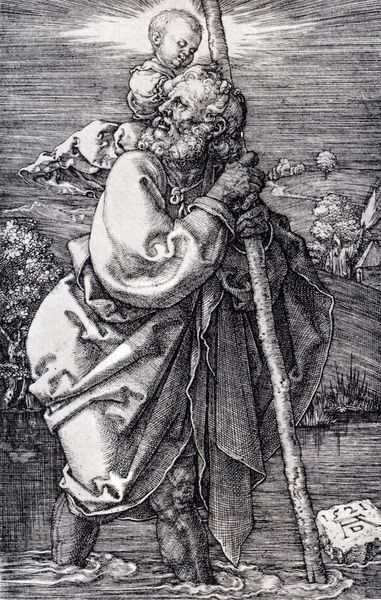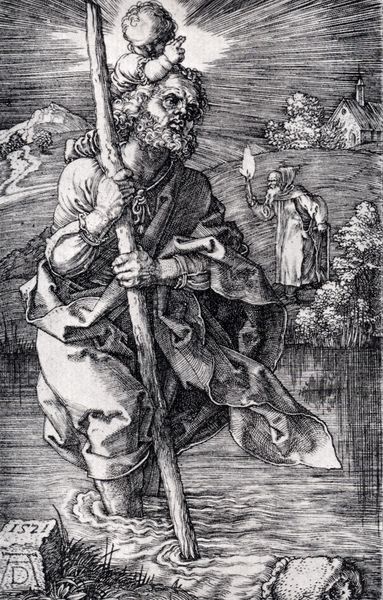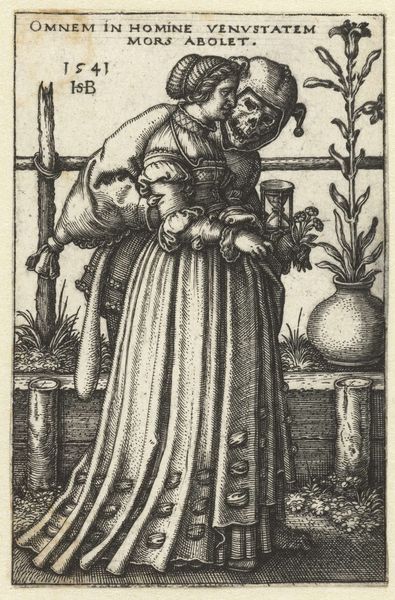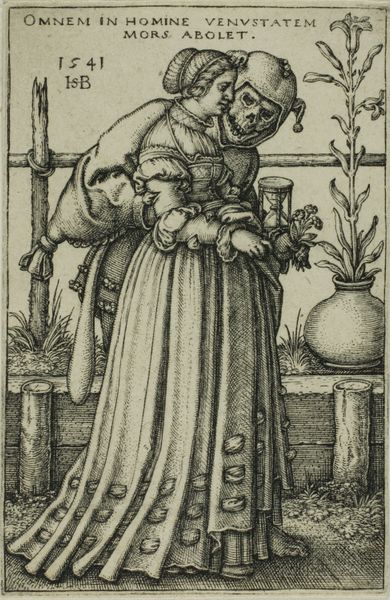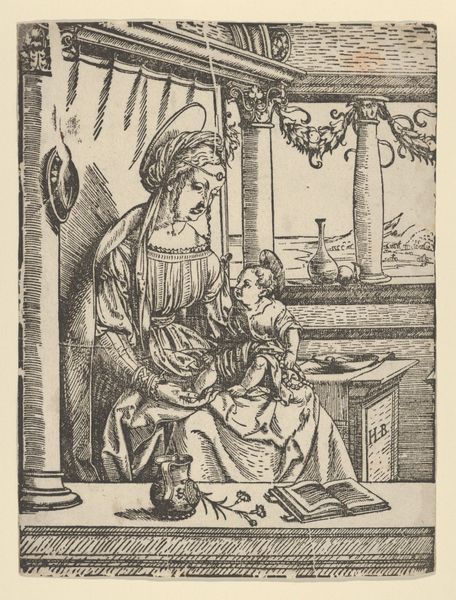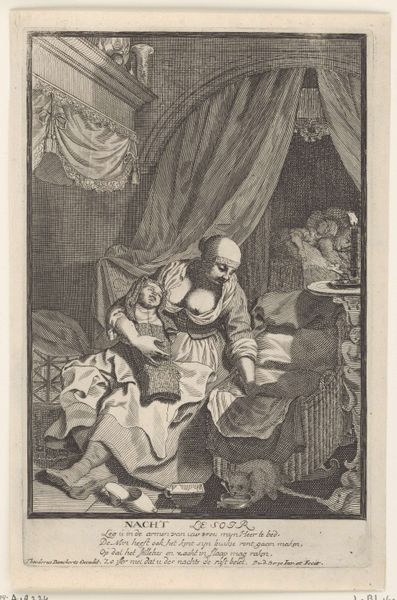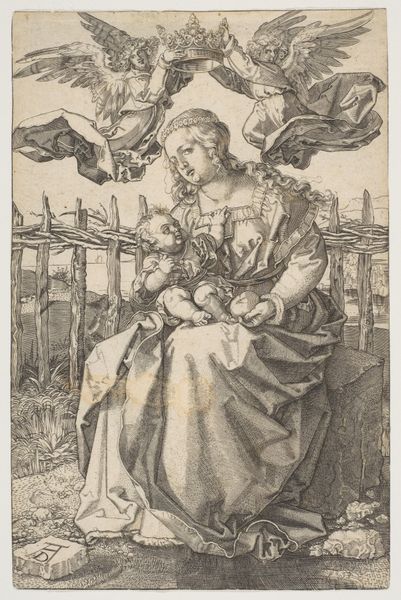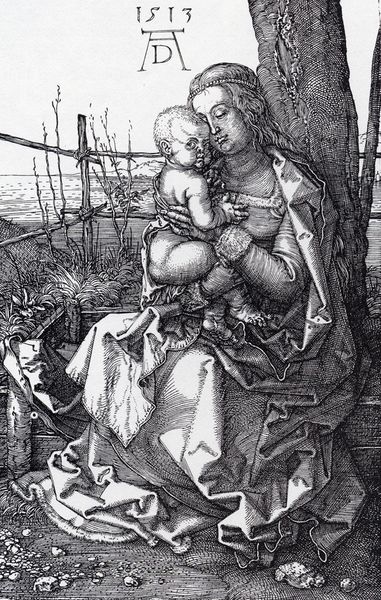
drawing, tempera, print, paper, engraving
#
portrait
#
drawing
#
tempera
# print
#
figuration
#
paper
#
child
#
christianity
#
genre-painting
#
northern-renaissance
#
engraving
#
angel
Copyright: Public domain
Editor: This is Albrecht Dürer's "Madonna Crowned By Two Angels" from 1518, made using engraving. The texture is what strikes me first – the way Dürer uses line to create so much depth and volume, especially in the drapery. What’s your take on this piece? Curator: I see it as a fascinating artifact of production and consumption within the religious landscape of the time. The very act of engraving, a readily reproducible medium, suggests a democratizing force. Think about how this print could circulate widely, bringing religious iconography to the masses. How does the material of the engraving itself—the metal plate, the ink, the paper—transform the sacred image into a commodity? Editor: That’s a really interesting perspective! I hadn’t considered the print as a commodity so much as a piece of devotional art. Curator: Consider the labor involved. Dürer was a skilled craftsman, and engraving was a demanding process. The precise lines weren't spontaneous; they were meticulously planned and executed. Does understanding the labour that went into its making affect your impression? Editor: Definitely. Thinking about the sheer amount of work definitely adds another layer. It’s almost like mass production but with intense individual skill. Curator: Precisely. And look at the inclusion of what appears to be Dürer’s monogram, or rather signature, very close to the foreground. It calls attention to the ‘brand’, a crucial element in art that becomes so popular due to prints that are shared to the masses. Where are boundaries between "high" art and "craft" when considering Dürer’s production of art with these prints? Editor: It kind of blurs the line, right? It challenges my assumptions about what constitutes valuable art by pointing to the process itself. Thanks for illuminating that perspective! Curator: It makes us think critically about the value and meaning imbued in the object through its means of production, a necessary part of the materiality of art making.
Comments
No comments
Be the first to comment and join the conversation on the ultimate creative platform.
